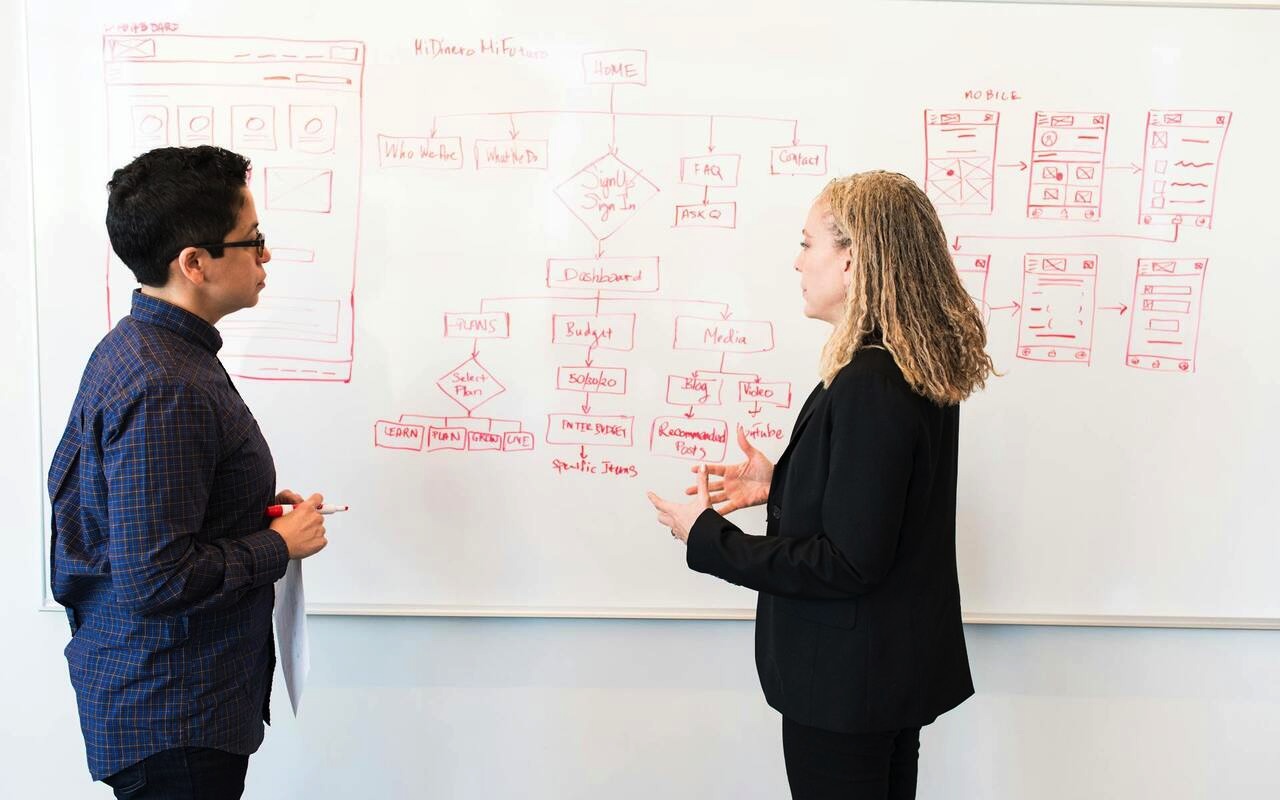
Since organizations are seeking methodologies that can help give them an edge during some fairly turbulent times, Design Thinking is what’s emerging as a powerful way to understand user needs.
The essence of Design Thinking is simply to take a human-forward approach to business. It emphasizes empathy and ideation, where we solve problems in an iterative way, working ever closer towards meeting the user’s needs.
In the broad context of digital transformation — something that even small businesses are undergoing, willingly or unwilling — Design Thinking uses technology as leverage to seek these innovative solutions much more effectively.
Design Thinking principles
Customer-centricity is what runs through the core, from start to finish, as you focus on human needs rather than organizational preferences. This means that any digital interventions are immediately tied to solving actual user problems, not just riding the wave of technology trends.
Iterative development is the next principle, which advocates for continuous prototyping and testing in order to refine the digital solutions before their full implementation. Unlike linear strategies, this approach is all about agility. In other words, while there must be a limit to how many iterations there are before launch, the process never ends, as this allows businesses to adapt quickly to feedback and changing technological possibilities.
Collaborative innovation is another principle which looks to breaks down departmental silos. This helps bridge together teams of designers and developers, and often marketers too, as they strategize to develop holistic solutions.
Benefits of Design Thinking
Enhanced customer experiences is the clear benefit of Design Thinking, as it stands as its core value. This is a very visible outcome which helps build connections to users, meaning the bottom-line benefit is loyalty and return rate.
By creating more intuitive platforms and tools that resonate with audiences, the friction between humans and what the outcomes they want is reduced rather than increased. Risk reduction is a clear benefit as a result of the iterative testing and validation. It catches issues before they become costly failures, and having integrated teams working together brings more perspectives in spotting potential issues.
Organizations can see a lengthier return on their technology investments, as they’re not chasing the latest trends. With actual user requirements and being user-focused, this functionality will become dated slower than fad movements.
Leading Design Thinking companies
MakingSense is one prominent consulting firm that is demonstrating how Design Thinking can even transform entire industries. Because of their extensive experience in digital product development, they specialize in creating customized solutions with a focus on intuition. Development time estimates are routinely hit, but the iterative ethos remains on even after launch.
IDEO is perhaps the global benchmark since the early 90s, as they helped pioneer human-centered design approaches to a few different industries. They aims to extend beyond product design into complete business processes, helping with business strategy and leading rapid prototyping.
Fjord is another firm positioning itself as a leader in crafting very unique digital experiences that go beyond user expectations and beyond simple functionality. Their highly customized process starts with in-depth research on user behaviors, which forms the foundation for generating ideas with positive impact. They’re not afraid to experiment and push the boundaries, both in mobile applications and complex technological platforms.
Finally, Accenture uses Design Thinking in its transformation services. These help companies adapt more quickly to technological changes, while staying on track with serving the end user. They’re experienced in using artificial intelligence and data analytics in order to help automate a user-centered experience, all while keeping internal processes optimized.
Examples of successful applications
Airbnb is a good example of demonstrating empathetic design, which helped revolutionized user experience when facing stagnating growth. Through direct user interviews, they began to identify poor accommodation visuals as their key problem. Their solution was to offer professional photographers so that the quality of listing presentations goes up.
Netflix similarly evolved, not just from physical DVDs, but as a leading way to present an endless feed where the user never runs into any dead ends. By using their data, they can present personalized recommendations and deliver solutions to the user’s paradox of choice.
GE Healthcare applied Design Thinking in its own way to try and transform intimidating medical equipment for children. Their "Adventure Series" helped redesigned MRI machines as pirate ships, which helped increase patient satisfaction by 90% — not to mention the improvement in scan quality and resource efficiency. Again, it’s something that is better thought up by interviewing the children themselves and asking what they don’t like about the current service — not just multi-choice surveys, but real conversations.
Salesforce, SAP, Coca-Cola and DBS Bank have all applied Design Thinking principles themselves. The common thread throughout is the unwavering user focus and iterative improvement process.
Future outlook
Design thinking has proven to be indispensable in innovation, as it helps keep us on track for why we’re innovating, not just progress for progress’ sake — which can be futile at best, and damaging at worst.
Share this post
Leave a comment
All comments are moderated. Spammy and bot submitted comments are deleted. Please submit the comments that are helpful to others, and we'll approve your comments. A comment that includes outbound link will only be approved if the content is relevant to the topic, and has some value to our readers.

Comments (0)
No comment